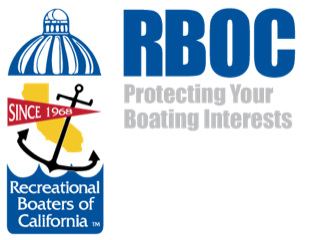RBOC and its national partner BoatU.S. are urging the State Water Resources Control Board to extend the July 13 public deadline, engage the boating community, and address critical boating issues in the State Board’s Draft 2020-2025 Nonpoint Source Program Implementation Plan.
For a copy of the complete letter: click here
The proposed 2020-2025 Nonpoint Source Program Implementation Plan presents the general goals and objectives of the co-lead state agencies for addressing nonpoint source pollution over the timeframe of July 2020 to June 2025.
It is important to note that the plan is being developed at a unique time for all Californians during the unprecedented COVID-19 pandemic, with stay-at-home orders and other necessarily impacting personal and business activities including recreational boating and our related industries. The protection of public health and safety is paramount, and demands the dedication of resources and effort that limit the ability of the public stakeholders to give the draft the time and attention it deserves. RBOC and BoatUS urge forbearance.
It is also essential that stakeholders be engaged in the consideration of comprehensive plans such as this proposal, especially when they will have significant impacts. To the best of our knowledge, this has not occurred with the current proposal: members of the boating community have not been contacted, boating and boating industry organizations have not been consulted. Individual subscribers to the State Water Board’s email notifications were not notified.
Testing that has been done at a few sites in Southern California indicates no negative impacts on aquatic organisms. Before a policy is implemented in a haphazard patchwork throughout the state, the organizations are requesting a statewide Water Effects Ratio [WER] Policy and a comprehensive plan for site-specific testing so that we can properly evaluate all coastal water bodies in Southern California. This is a goal outlined in the February 2019 Executive Director’s report.
RBOC and BoatU.S. are also expressing concerns that the Santa Ana Regional Water Quality Control Board uses a steady state model that does not use tidal information or basin dimensions to predict environmental copper concentrations. That is the methodology that yields an 85% load reduction for Marina Del Rey. The California Department of Pesticide Regulations [DPR] made regulatory decisions based on Predicted Environmental Concentrations of Copper using the MAMPEC model. As a result, DPR has approved anti-fouling paints containing low-leach-rate copper that they expect to achieve a sufficient copper load reduction.
These disparate approaches yield predictions that differ more than 300% from one another causing uncertainty for boaters and marina operators. We need a statewide Water Effects Ratio (WER) Policy and a comprehensive plan for site-specific testing.
Additional issues have been preliminarily identified. For instance, throughout the plan, objectives and milestones identify specific dates that are overly ambitious and, in today’s pandemic, unachievable.
RBOC and BoatU.S. remain committed to the protection and enhancement of the state’s waterways. Sound science and site-specific testing are the critical path forward.
